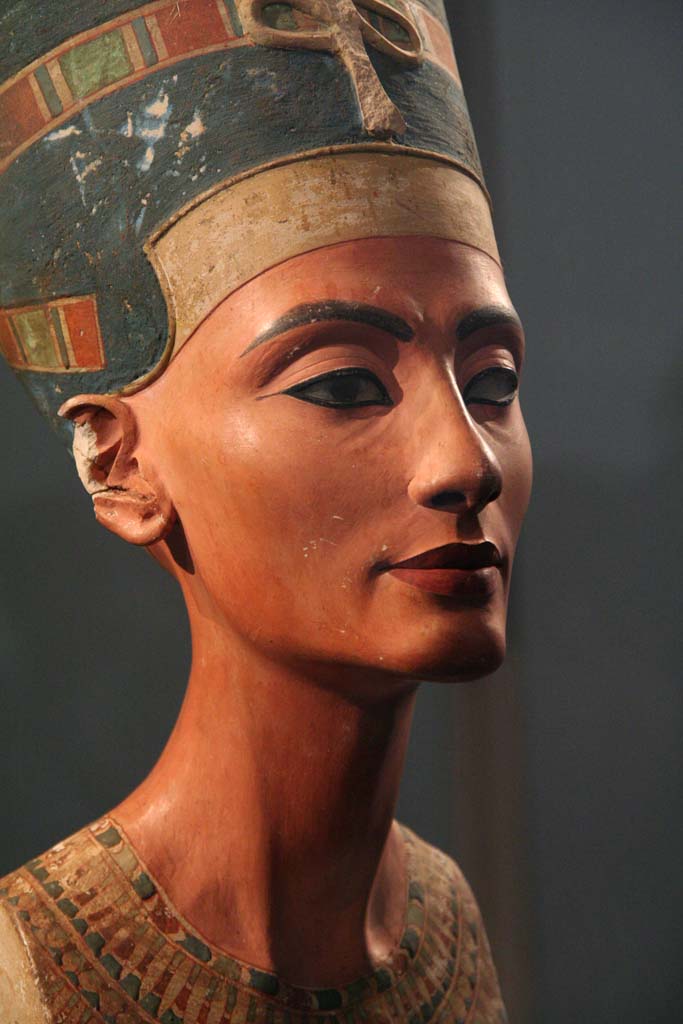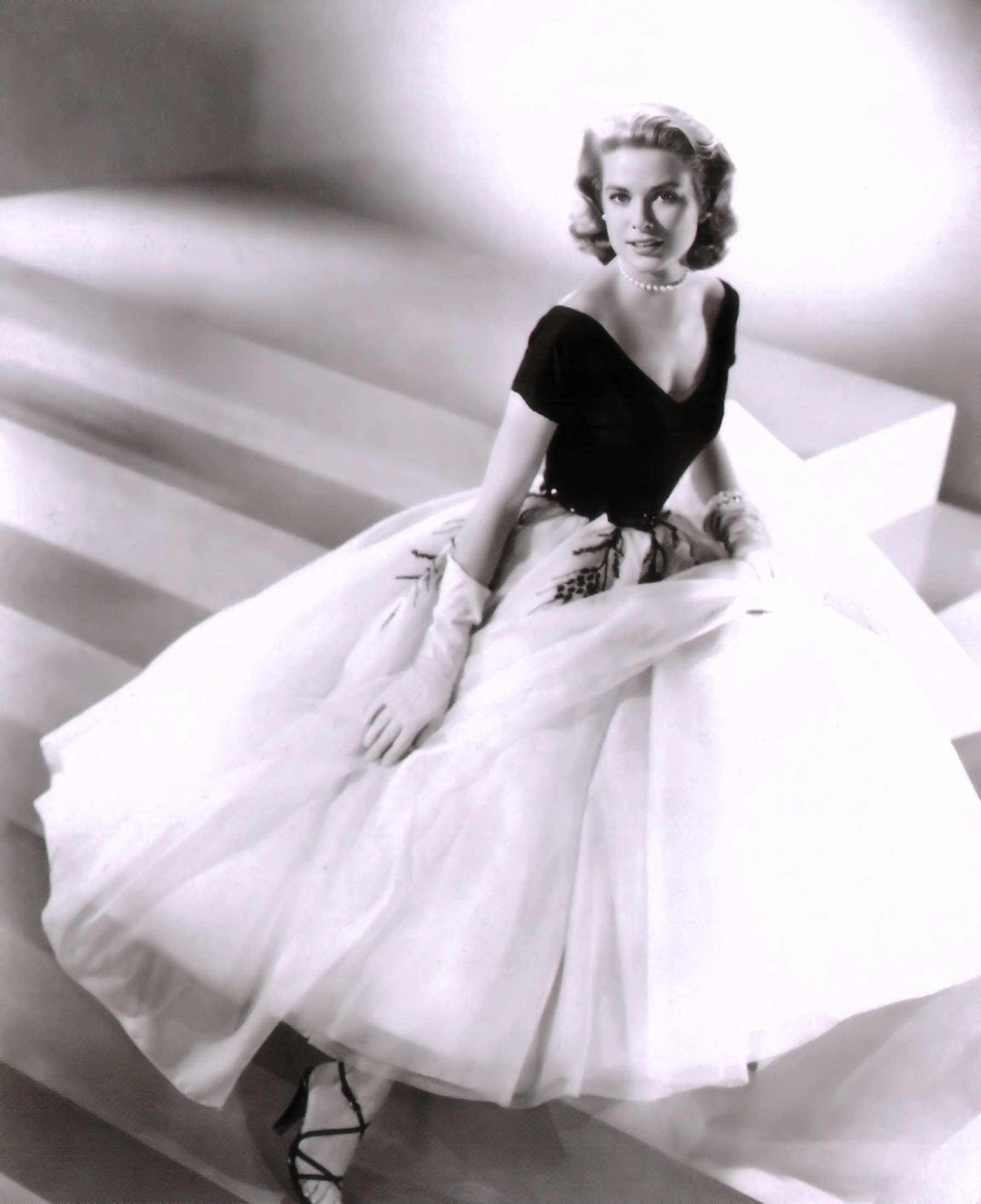The beauty is an attribute of a person or object that is dependent on the eye of the observer. Beauty is connected to other terms such as attractivity, aesthetic but also with positive characteristics that do not really have a connection to beauty eg. success, discipline, elegance, dominance, intelligence. When judging beauty of a person it is usually looked at the proportion of body and face, the colour of hair, eyes, skin. There is so called effect of exposure that means the more you are exposed to something the more you will like it.
 |
| Nefertiti: source |
Krása je vlastnost jedince nebo předmětu, kterou vyhodnocuje pozorovatel. S krásou souvisí termíny atraktivita, estetično, ale je dávána i do souvislosti s pozitivními vlastnostmi, na které reálně nemá žádný vliv, např. úspěšnost, disciplinovanost, elegance, dominance, inteligence. U lidí se při posuzování zevní krásy hledí na proporce těla a tváře, na barvu vlasů, očí, pleti. V souvislosti s krásou souvisí tzv. efekt vystavení se. To znamená, čím častěji jsme něčemu vystaveni, tím spíše se nám to bude líbit.
This is how advertising works but it is important not to overdo it because some people might become blind when it comes to classic advertising (and here comes the sponsoring of the bloggers). Advertisements are probably to be blamed for the obsession with thin body because only thin bodies often enhanced by photoshop are usually to be found in ads. This ideal is brought on consumers of these ads and they start to judge themselves and their surroundings by this ideal - and this is what the ads want because ads are offering unhappy people solutions to their unhappiness. The real problem is that it is not even possible to look like this ideal presented in the media because this ideal does not even exist - the model was made up for the purpose of this ad, she was lit and then photoshopped.
Právě s tímto pracuje reklama, avšak je nutné to s propagací nepřehnat, protože si lidé umí vypěstovat i slepotu vůči reklamním sdělením (což je v současnosti řešeno sponzorováním bloggerů). Odtud zřejmě pochází současná posedlost štíhlým tělem, protože v reklamách se takřka vždy setkáváme pouze s hubenými modelkami, které jsou často ještě upraveny v photoshopu. Takto je tento ideál přenesen na konzumenty těchto reklam, kteří následně podle něj hodnotí i své okolí a sebe - a přesně o to reklamám jde, protože ty nabízejí nespokojeným lidem své produkty, které mají jejich problémy vyřešit. Problémem však je, že prezentovanému ideálu se nelze reálně přiblížit, jelikož neexistuje - modelka byla pro reklamu speciálně nalíčena, nasvícena a vyretušována.
The cosmetic industry makes it possible for women to alter their look to become closer to the ideal look in their culture. This is the reason why it is needed to alter the advertisement to the particular region because if the ad is aimed on African women it is nonsense to use European or Asian model because they will not be able to identify themselves with these models.The same rule applies on age or social groups. It is only logical to create an ad for teenagers with a teenager. The exception are some Asian countries that consider the look of Europeans as ideal, which leads to plastic surgeries that make their dream of ideal possible (South Korea is very famous for their thriving plastic surgery business).
Právě kosmetický průmysl umožňuje ženám upravit svůj zevnějšek tak, aby se co nejvíce přiblížily ideálu krásy ve své kultuře. To je důvod, proč je třeba reklamu přizpůsobovat danému regionu, protože pokud bude reklama cílit na černošky, je nesmyslné, aby v ní vystupovaly bělošky nebo Asiatky, protože s nimi se cílová skupina nebude schopna natolik ztotožnit. Podobně je to i s věkovými a sociálními skupinami. Je-li produkt určen pro teenagery, je logické, že jej bude prezentovat teenager. Výjimkou jsou některé asijské země, které dodnes pokládají za ideál krásy europoidní rasu, které se snaží přiblížit prostřednictvím velmi rozšířených plastických operací (asi nejvíce je tímto proslulá Jižní Korea).
When you try to compare the look of models in ads where they are presented as an ideal with the average look of people of the region where the ad is running you will find a contrast between the look of the "normal" people and this "ideal" from an ad. You will realize that the look from the ads is in minority in the society but because of the effect of exposure and the connection of such look with positive characteristics the "normal" people, the majority, will start to feel unhappy and will be lead to shops to solve this artificially created problem.
Porovnáme-li vzhled modelek z reklam, kde jsou prezentovány jako ideál, se vzhledem osob daného regionu, kde reklama běží, neujde nám kontrast mezi tím, jak průměrně vypadá populace toho kterého regionu a tím, že je mu v médiích prezentován obraz, který existuje v takové skupině pouze v menšině. Kvůli efektu vystavení se a spojením "ideálního" vzhledu s pozitivními vlastnostmi, však dochází k tomu, že ta skupina lidí, která ve společnosti převažuje a je vlastně "normální" se náhle začne cítí se sebou nespokojeně a nechá se nahnat do obchodů apod., aby tento uměle vzniklý problém vyřešila.

Comments
Post a Comment
Thank you for your input, I will get back to you as soon as possible! :3